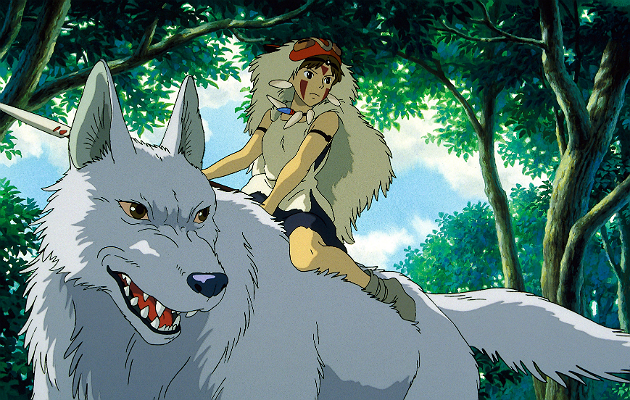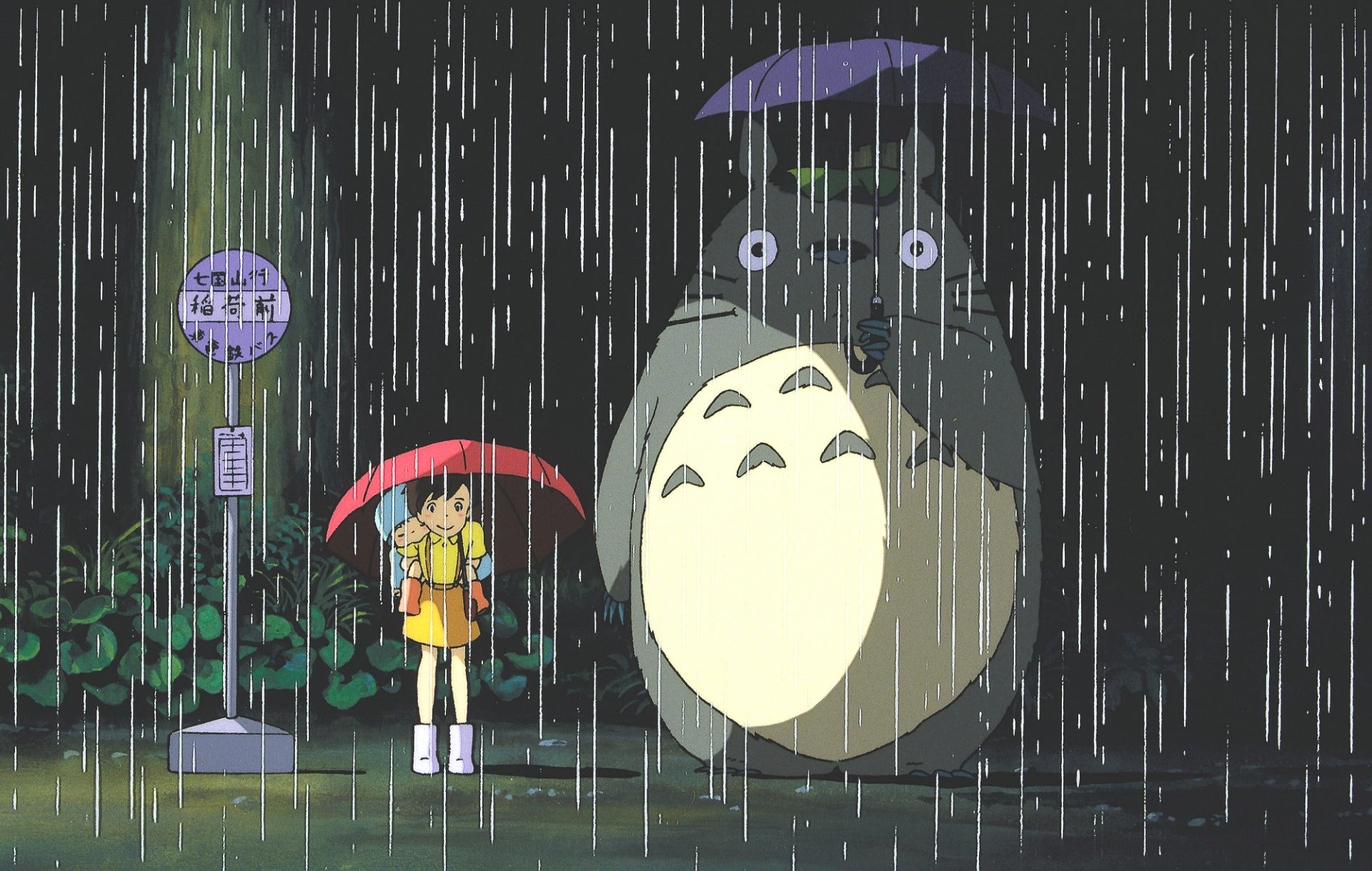A celebration of the most magical animation studio in the world
Since 1985, Studio Ghibli have been the world’s primary exporter of Japanese animation. Though its most iconic films, Spirited Away and My Neighbour Totoro, are shining examples of the studio’s storytelling and creativity, Ghibli’s wider filmography contains some of the most endearing and powerful animation of the last 40 years.
Hayao Miyazaki is the mind behind the studio’s trademark style – if you want to call it that. However, while Miyazaki’s works feature the more fantastical elements of the studio, Isao Takahata – who passed away this year – crafted films that reflected the weird compromise of modernity and the sensitivity of the human condition. He left an imprint on the studio that would be criminal to overlook. The same can be said for the myriad other directors that put their hands to Ghibli works.
This here is an honest ranking of the studio’s feature films. For any Ghibli pedants out there, I want to make two things clear: Ocean Waves was a television film so didn’t make it into the list and Nausicca Of The Valley Of The Wind, despite being released a year prior to the studio’s founding, does count because it showcases the themes, animation style and morals of Miyazaki’s vision more-so than many ‘official’ Ghibli entries.
Without further ado, the works of Studio Ghibli, in order of greatness.
21. Tales Of Earthsea (2006)
(dir. Gorō Miyazaki)
What’s it about?: When a great evil causes the ‘balance’ of the kingdom to falter, Prince Arren murders his father and flees his castle. After being rescued by the Archmage Sparrowhawk, the two wander around, team-up with an unknowing magic user called Arren and coincidentally find themselves heading towards the root of the world’s imbalance: the sinister wizard Lord Cob. The film canters along a path of tired fantasy tropes and fails to build a world or characters worth investing in.
Best moment: Prior to the third act, Therru and Arren stand over a swaying plain as Therru sings her titular song. The sweetness and simplicity of this moment is possibly the only meaningful character interaction between these two protagonists. The rest is cliché fantasy nonsense.

20. From Up On Poppy Hill (2011)
(dir. Gorō Miyazaki)
What’s it about?: Set in the early ‘60s, the Tokyo olympics are coming to wipe away the shame of WWII and justify the rapid modernisation of once quiet Japanese towns. The cost of this is the community hub of Umi Matsuzaki’s school, the ‘Quartier Latin’ clubhouse. Umi and her friend Shun Kazama, along with the rest of her discerning schoolmates, must plan to keep the clubhouse alive. A breezy and simple story about the importance of preserving history to steer a new generation toward a brighter future.
Best moment: Taking a tour through the Quartier Latin clubhouse, seeing amateur archeologists, philosophers and scholars of myriad disciplines in action. It’s bouncy and cluttered in its design but demonstrated that Poppy Hill excels in world-building more than it does compelling storytelling.

19. The Cat Returns (2002)
(dir. Hiroyuki Morita)
What’s it about?: When high schooler Haru charges across a busy road to save a cat from oncoming traffic, she is sucked into the secret world of cats. As a reward for her bravery, Haru is set-up to marry the cat prince. With help from the sharply dressed, smooth-talking cat ally The Baron Von Gikkingen, Haru must escape the antiquated feline feudalist society. A familiar tale about remembering who you are and trusting yourself, The Cat Returns bites off more than it can chew from ‘Alice In Wonderland’.
Best moment: Haru is catnapped from the Baron’s home by a sea of grey cats. They move in unison to create a current of fur as they open portals Doctor Strange-style to whisk Haru away to their realm. It’s an exhilarating chase sequence if not a bit surreal.
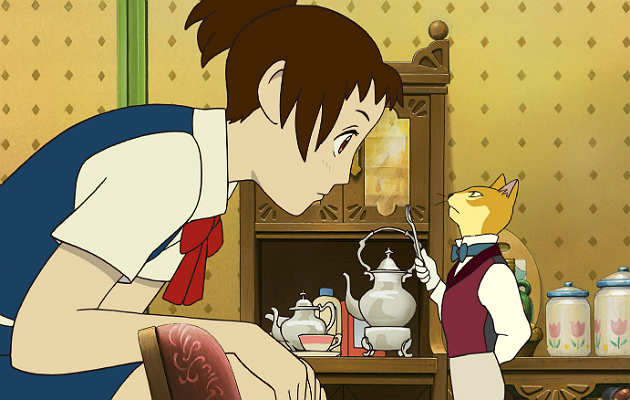
18. My Neighbors The Yamadas (1999)
(dir. Isao Takahata)
What’s it about?: A family-orientated comedy is a slice of life series of vignettes that resembles a newspaper comic strip more than it does a Ghibli fantasy epic. The film follows the Yamada family as they struggle and stumble through family life, going through all the hallmarks of a barely functional family. Takahata had a prodigious knack for showing how fraught and dysfunctional relationships are often built on foundations of love. My Neighbors The Yamadas, with its scribble-style animation, embodies this fully.
Best moment: When Nonoko goes missing after a trip to the shopping mall and it’s equal fault of the remaining four family members. The argument that follows is one of the many small and truthful moments that makes The Yamadas feel like a real family.
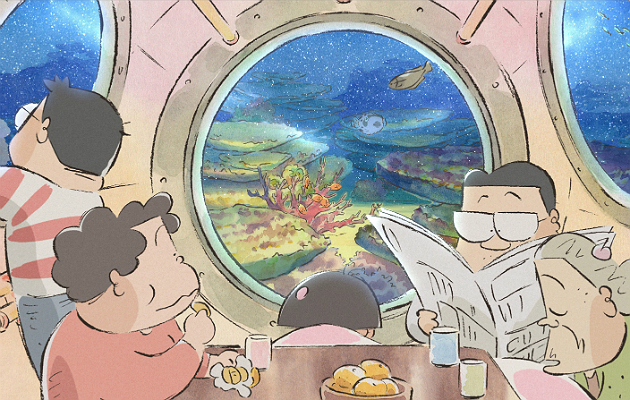
17. Whisper Of The Heart (1995)
(dir. Yoshifumi Kondō)
What’s it about?: Shizuku Tsukishima is a 14-year old whose passion for reading at her local library casts a shadow over her academic responsibilities. When she finds that every book she takes out of the library has already been checked by a mysterious ‘Seiji’, she sets out to find him. The two fall for each other and encourage each other’s creative pursuits: Seijji moves to Italy to study violin-making while Shizuku attempts to write her first novel, a fantasy book about an ornate cat statue named ‘The Baron’. It’s a wholesome and heartfelt documentation of the constructive potential of young love.
Best moment: While hanging at Seiji’s house, Shizuku and Seiji begin an impromptu cover of John Denver’s ‘Take Me Home, Country Roads’. Seiji’s family come home and join in to create a full band jam session. It’s representative of Shizuku and Seiji sharing their talents with each other to create something greater than the sum of its parts.
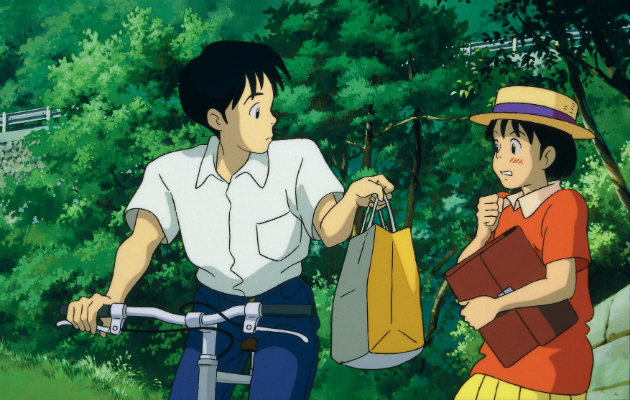
16. Ponyo (2008)
(dir. Hayao Miyazaki)
What’s it about?: Ghibli’s take on The Little Mermaid sees Ponyo, the daughter of the underwater sea-wizard Fujimoto, escape onto the surface to be adopted into the family of Sōsuke. Ponyo vows to become human much to her father’s protests. A magic tale that enchants kids of all ages and warns quite strictly of the damage modern society is wreaking on the ocean.
Best moment: When Sōsuke and his mother are escaping the tempest summoned by Fujimoto, they drive to a dead end only to see Ponyo, now fully grown, running along the waves in full control of her magic powers. It’s an epic scene taking score inspirations from the likes of Fantasia.
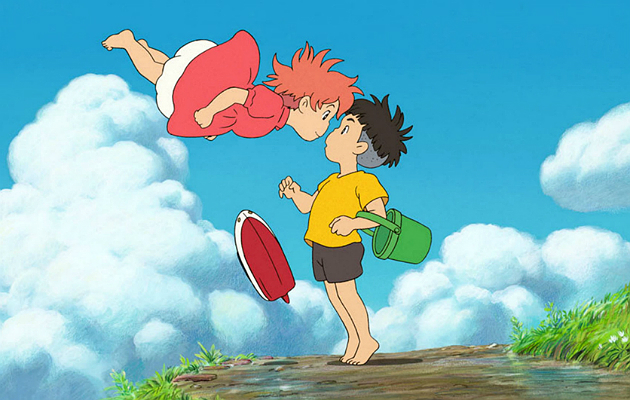
15. The Secret World Of Arrietty (2010)
(dir. Hiromasa Yonebayashi)
What’s it about?: It’s a small story with a big heart. Arrietty is a miniature being known as a burrower, her family are maybe the last of their kind. Living in a makeshift home, Arrietty rummages through the human house she lives next to to borrow pins, sugar cubes and trinkets in order to survive. When Arrietty befriends the bedridden human being Shō, the two realise they have a lot in common in terms of living as occupational hazards. Taking some story beats from Disney, Arrietty doesn’t feel Japanese in its DNA. Though its animation is distinctly reminiscent of the work of Miyazaki in its characters and world-building, Arrietty really shows how far the style has developed since the late ‘80s.
Best moment: The theme music written by Cécile Corbet. ‘Arrietty’s Song’ is by far one of the most memorable and powerful character themes across the Ghibli filmography. It strikes a balance between tenderness and determination, just like the character it’s written for.
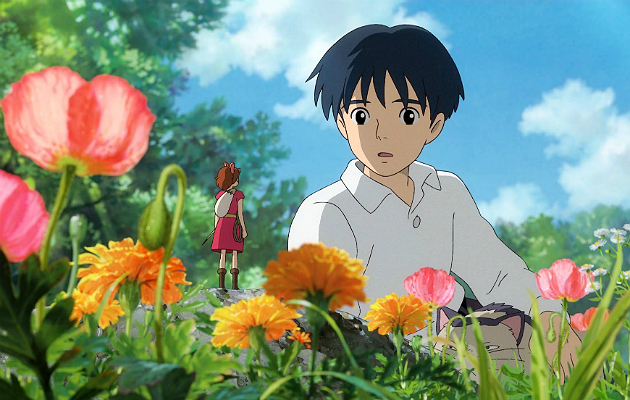
14. Only Yesterday (1991)
(dir. Isao Takahata)
What’s it about?: A realistic drama set in two time periods of Taeko Okajima’s life: when she was a school girl and her in the present day, unmarried and taking another trip to the countryside to work on a farm. It’s a quiet and slow-burning story about society’s expectations of women and how the complicated life stuff we experience as kids – and might not fully understand – leaves a lasting impression on who we grow up to be. It’s Takahata’s speciality to craft films as sensitive and delicately engaging as Only Yesterday.
Best moment: Near the end of the film, Taeko finds herself sitting in a car while rain pours and ties together all the loose threads of her childhood that led her to live a life that’s free but not necessarily unconditional. It’s a touching and frank reflection on how we internalise expectations of ourselves.
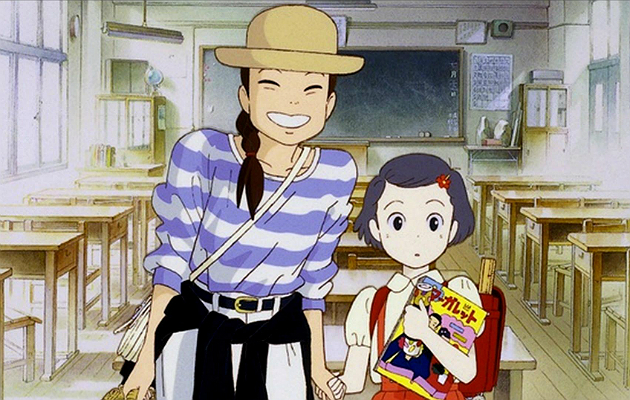
13. The Wind Rises (2013)
(dir. Hayao Miyazaki)
What’s it about?: All brilliant designer Jiro Horikoshi wants to do is create beautiful airplanes. The film follows Jiro – inspired by Italian aircraft designer Giovanni Battista Caproni – as he trains to be a prodigious aircraft designer while taking care of his sick wife and working as World War II starts to impact Japanese society. It’s a beautiful tale of hardship and realising your dreams while also portraying sensitively how Japan’s role in WWII impacted the country; it does so with nuance.
Best moment: When Jiro finalises his design for his Mitsubishi A5M and tests the concept in his dreams with Caproni. It’s a full realisation of the creativity of historical figure whose tale might have been embellished for The Wind Rises but whose talent was not.

12. The Tale of the Princess Kaguya (2013)
(dir. Isao Takahata)
What’s it about?: Based on a story from 10th century folklore, Princess Kaguya is found, the size of a bean, in a bamboo shoot. Her divinity encourages her foster parents to save their wealth and give her a lifestyle that befits her noble nature. The film follows Kaguya, headstrong and playful, as she struggles to fit into the mould of nobility. Its simplicity doesn’t justify its hefty length, but its animation is stunning, moment-to-moment, as it lambasts the shallowness of materialism. It’s a bittersweet entry with some of Ghibli’s most incredible art.
Best moment: When Princess learns that she is to be married off to a noble suitor, she charges angrily out of her home. As she runs, the animation moves from soft minimalism to these strong, black lines that jitter chaotically, capturing the dizzying effect of anger.

11. Porco Rosso (1992)
(dir. Hayao Miyazaki)
What’s it about?: Transformed into a pig following the events of WWI, Porco Rosso lives out his days as a freelance bounty hunter, taking down pirates in his iconic red plane. A straightforward caper about bravery and sky pirates with some awe-inspiring air combat sequences. Porco Rosso is the gold standard of action movies in the Ghibli filmography but has a profound moral to share about how war lingers in the minds of soldiers many years after they retire from combat.
Best moment: It’s one line uttered by Porco Rosso that rings true in this age more than ever: “I’d much rather be a pig than a fascist”.

10. When Marnie Was There (2014)
(dir. Hiromasa Yonebayashi)
What’s it about?: When high-schooler Anna becomes clinically disinterested and stressed, she’s sent to stay with friends of her foster parents in the beautiful, seaside town in the country. Struggling to connect with her new guardians, Anna finds solace and a mysterious kindred spirit in Marnie, a girl seemingly out of time who lives in an austere mansion. A tear-jerker about the destructive power of loneliness, Marnie was cited originally as Ghibli’s final work and would have been a perfect swan-song.
Best moment: When Anna and Marnie escape onto the mansion’s terrace to dance under the moonlight. The introverted clumsiness of Anna and the delicate grace of Marnie juxtapose this beautiful moment where you feel the two falling deeply for each other.
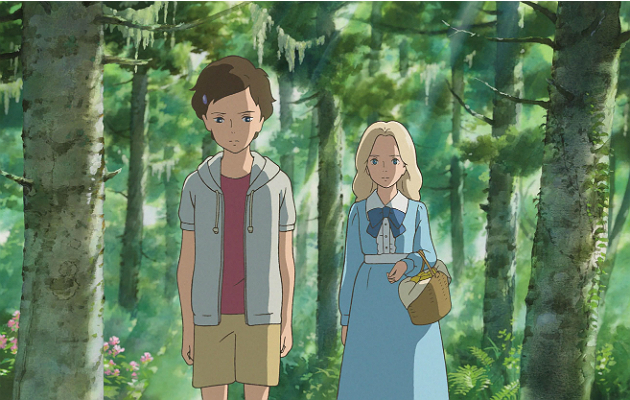
9. My Neighbour Totoro (1988)
(dir. Hayao Miyazaki)
What’s it about?: Sisters Mei and Satsuki move to an old house while their mother recovers from a pretty severe illness. While exploring the neighbouring forest, Mei stumbles upon a magical world of cryptids, creatures and monsters: the king of which is the titular bear-owl(?) Totoro. Satsuki quests to find Mei after she goes missing with the help of the forest’s fantastical residents. It’s an iconic film that captures so purely how we find strength in our families. It’s the perfect introduction to Ghibli and the antidote to the rainy-day blues.
Best moment: When Mei first climbs onto Totoro’s chest while the monster is sleeping. It’s a character defining moment that shows Mei as fearless and curious. Our introduction to the fluffy guardian of the forest is as scary as it as exhilarating. It begs a reverence for nature.
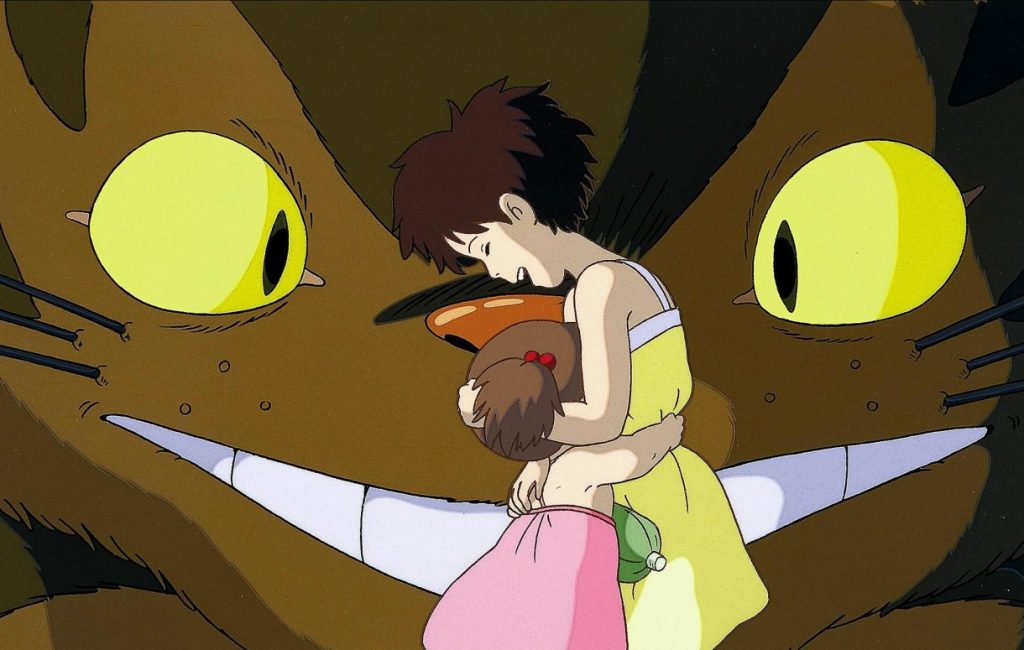
8. Nausiccå Of The Valley Of The Wind (1984)
(dir. Hayao Miyazaki)
What’s it about?: Though not technically produced by Studio Ghibli, Nausiccå has all the trimmings of an iconic Ghibli entry. It takes in a post-apocalyptic world where ancient and unpredictable weapons are being used to eviscerate a species of mutated insects. Nausicca’s mission – like many Miyazaki works – is to find a compromise between the indiscriminately violent humans and the chaotic, defensive power of nature. Everything you need to know about Miyazaki’s ethos lies within Nausiccå.
Best moment: The God Warrior unleashing its full power is still a haunting image. Drawing inspiration from the power of nuclear weapons, Hideaki Anno’s animation captures the awe and heavy cost of using such a weapon.

7. Pom Poko (1994)
(dir. Isao Takahata)
What’s it about?: The raccoons of Japan had always lived without interruption from humanity. But when a housing complex starts to wipe out the forest, the raccoon community must learn to defend themselves using the ancient art of transformation. Pom Poko unpacks the complexity of resistance movements. It portrays the complexity of both passive and violent protest through the lens of these often crass but genuinely well-developed raccoons.
Best moment: Under the tutelage of the transformation masters, the raccoons put on an incredibly surreal and unintentionally entertaining parade of monsters, spirits and ghouls in order to scare off the urban humans. It doesn’t work but is quite the spectacle of animation.
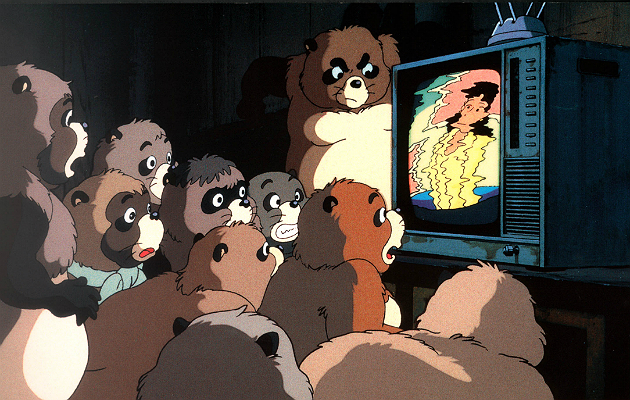
6. Spirited Away (2001)
(dir. Hayao Miyazaki)
What’s it about?: Spirited Away represents many people’s entry into Ghibli and remains most of those people’s favourite. It’s Miyazaki operating on all cylinders. Chihiro is seperated from her parents after entering an abandoned village and is thrown into the spirit world, specifically the bathhouse where spirits go to relax. Chihiro is determined to make her through the spirit world by any means necessary and save her parents from their curse. Though it’s third act wanes a bit in terms of keeping momentum, Spirited Away is a certified classic about finding friends in unlikely places and deserves all the praise it gets as one of Miyazaki’s greatest accomplishments.
Best moment: The bathhouse comes alive when a Stink Spirit approaches the building, oozing brown gunk and swallowing the spa’s clientele on its way. This sequence is as gross as it is hypnotic.
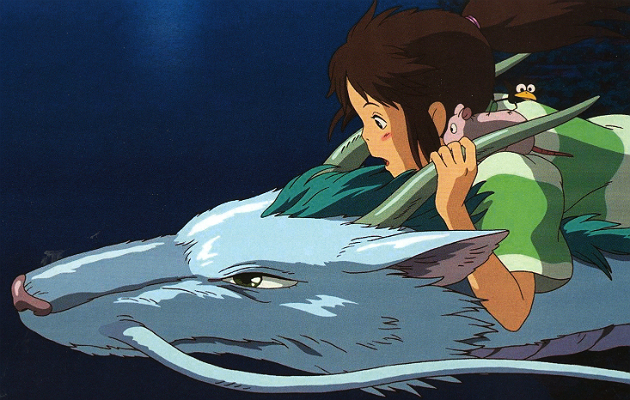
5. Grave of the Fireflies (1988)
(dir. Isao Takahata)
What’s it about?: A harrowing tale about a brother, Seita, and his younger sister, Setsuko, whose home is firebombed during WWII. The film follows them as they struggle to survive, losing their dignity, their access to food and water but never their bond as family. This is Takahata’s finest work that is a genuinely horrifying portrayal of the violence of war. It’s upsetting without being manipulative, a testament to its masterful storytelling.
Best moment: Seita captures a fistful of fireflies in a box for Setsuko. When conditions are reaching their bleakest, the fireflies are released into the air, as childish wonder spreads across the siblings’ face, it shows how powerful hope is in times of dire strife. It’s heartbreakingly beautiful.
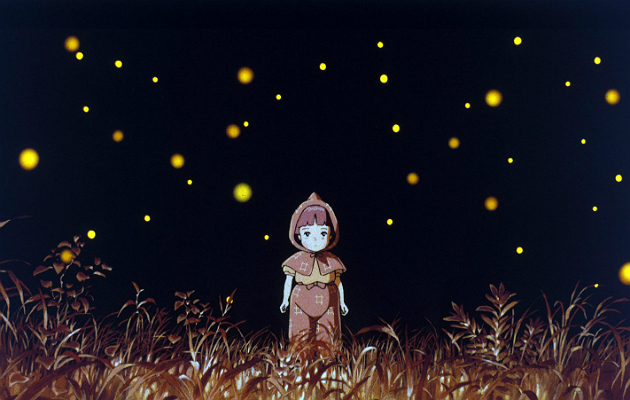
4. Howl’s Moving Castle (2004)
(dir. Hayao Miyazaki)
What’s it about?: When Sophie is cursed by the Witch of the Waste and turns to a 90-year-old woman, she seeks out the mysterious wizard Howl and his quadrupedal castle. Howl is a charming anime prince whose cavalier nature doesn’t fool the discerning and headstrong Sophie. Howl’s entanglement in a magic war eventually starts to tear at the fabric of his perfectly unstable castle and life. It’s overblown at moments but Howl’s Moving Castle is a perfect love letter to experimental fantasy and showcases Miyazaki’s love of the genre unabashedly.
Best moment: A flashback reveals the nature of Howl’s being as a kid encountering magic for the first time. It’s an incredibly poignant scene that anchors this otherwise unlikable character to the earth and shines a light on his fragility. Redemption for arsehole men in movies is rarely meaningful; Howl’s Moving Castle comes close to pulling it off.
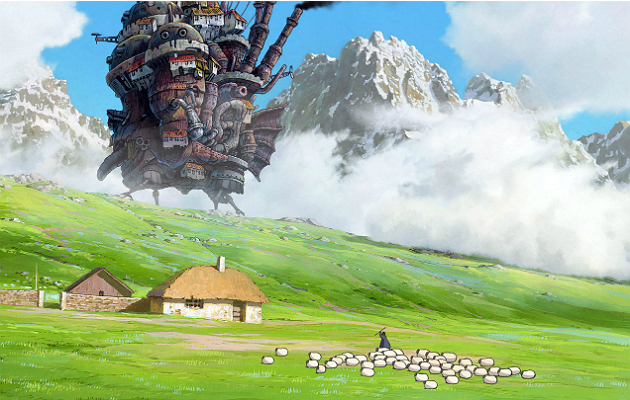
3. Castle In The Sky (1986)
(dir. Hayao Miyazaki)
What’s it about?: Ghibli’s first ‘official’ film, Castle In The Sky, in principle, is a pretty tired story about a boy and a girl attempting to keep a magical crystal away from a military organisation who want to use it for oppressive purposes. However, the world-building in this entry is some of Ghibli’s best. Laputa – the titular castle – is teeming with obtuse architecture and steampunk technology. Sheeta and Pazu have an undeniable chemistry that set the standard for young romances in Ghibli canon. Castle In The Sky by all means should have the reputation of Spirited Away or Totoro.
Best moment: It’s slightly on the nose, but when the Lauputan robot lifts a piece of debris to show a birds nest, Miyazaki’s vision for how technology and nature can coexist becomes realised for the first time in Ghibli history.
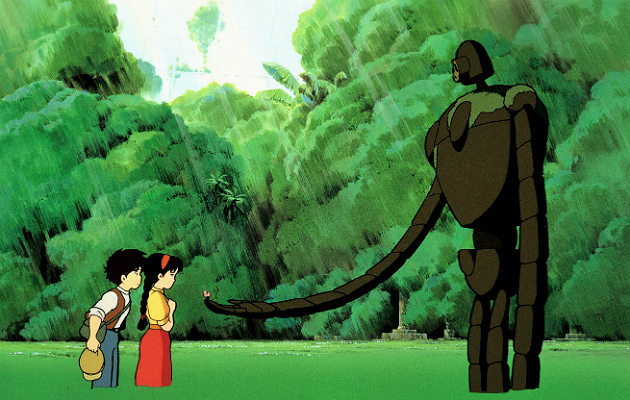
2. Kiki’s Delivery Service (1989)
(dir. Hayao Miyazaki)
What’s it about?: Kiki is a young witch in training who moves to a new town and freelances at a bakery, delivering goods on her broom. Kiki struggles to strike a balance between work and building a new life with her friends, including a burgeoning romance with the adorably dorky Tombo. Kiki is an inspiring tale about independent young women and how to make the most of one’s idiosyncrasies. The animation, characters, setting and feel-good nature of Kiki’s Delivery Service – coupled with the fact the movie doesn’t miss a beat in terms of momentum and intrigue – puts it slightly ahead of Miyazaki’s most wholesome works.
Best moment: It’s a real bummer, but watching Kiki lose her powers of flight halfway through the movie and find inspiration within herself to recapture the essence of her powers: her purpose to be the best Kiki she can be.

1. Princess Mononoke (1997)
(dir. Hayao Miyazaki)
What’s it about?: Prince Ashitaka protects his rural village from threats of the forest. When a demonic corruption starts spreading across the land, he encounters San, the warrior princess raised by wolves. As the forces of Irontown led by the fearless Lady Eboshi strive to harvest the forest, and mercenaries hunt the Forest Spirit, Ashitaka and San must fight to keep the forest protected. A fantasy of epic proportions, Princess Mononoke is a masterclass in establishing themes, building a world around them and executing animated action sequence with fury and beauty. This is Miyazaki’s greatest work fulfilled with enormity and prowess, a true masterpiece.
Best moment: Full of hubris, Lady Eboshi says: “I’m going to show you how to kill a god”. In the third act, as day becomes night, the Forest Spirit transforms into its final form: The Night Walker. This translucent creature towers over the forest and destroys the Irontown forces with ease. It’s a humbling and gratifying scene that depicts nature as deified, ferocious and justified in its retaliation.
